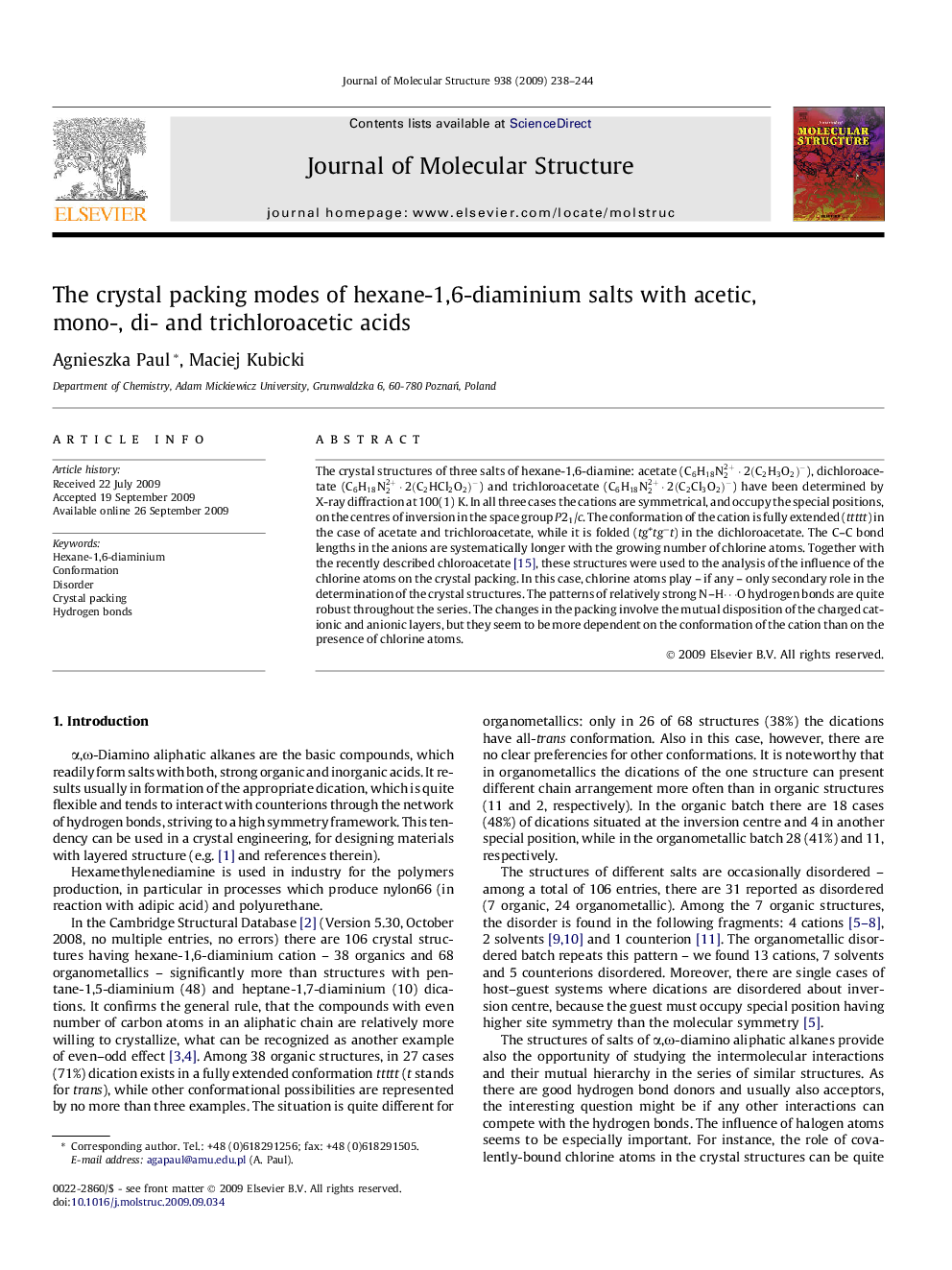| Article ID | Journal | Published Year | Pages | File Type |
|---|---|---|---|---|
| 1410257 | Journal of Molecular Structure | 2009 | 7 Pages |
The crystal structures of three salts of hexane-1,6-diamine: acetate (C6H18N22+·2(C2H3O2)-), dichloroacetate (C6H18N22+·2(C2HCl2O2)-) and trichloroacetate (C6H18N22+·2(C2Cl3O2)-) have been determined by X-ray diffraction at 100(1) K. In all three cases the cations are symmetrical, and occupy the special positions, on the centres of inversion in the space group P21/c. The conformation of the cation is fully extended (ttttt) in the case of acetate and trichloroacetate, while it is folded (tg+tg−t) in the dichloroacetate. The C–C bond lengths in the anions are systematically longer with the growing number of chlorine atoms. Together with the recently described chloroacetate [15], these structures were used to the analysis of the influence of the chlorine atoms on the crystal packing. In this case, chlorine atoms play – if any – only secondary role in the determination of the crystal structures. The patterns of relatively strong N–H⋯O hydrogen bonds are quite robust throughout the series. The changes in the packing involve the mutual disposition of the charged cationic and anionic layers, but they seem to be more dependent on the conformation of the cation than on the presence of chlorine atoms.
